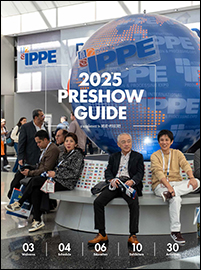
| Enhance your industry IQ Sign up for our free newsletters to stay informed on each day’s news and trends |
Subscribe |


Meat processors spend a lot of time and money prepping their products for sale. Whether the product is destined for the fresh meat case, packaged for sale in the supermarket meat department, or delivered to chefs and restaurateurs to prepare and serve to today’s demanding dining-out consumers, the quality and integrity of the meat must be maintained from processing to packaging to final-destination.
While the quality of the product lies in the hands of the processor, the strength, durability, and stability of the package itself are the responsibility of the packaging equipment manufacturers. Those companies are charged with the task of designing equipment that can fulfill the processor’s promise of a safe, secure, and quality product.
Packaging serves a variety of purposes. It protects the product from damage that could occur during shipping or when the product is handled by the end consumer. It keeps food products fresh and can oftentimes even extend a product’s shelf life. Packaging also serves the purpose of protecting food from contamination, adulteration, and potentially life-threatening food safety risks.
For years, MULTIVAC Group, a leading manufacturer of packaging solutions sold around the globe, has been considering the needs of the end-user when developing its packaging equipment. Each machine MULTIVAC builds is individually designed to meet the processor’s requirements regarding package design, production output, and efficient use of resources.
When building packaging systems, MULTIVAC starts by considering the product itself. Other criteria include shelf-life expectation, mechanical protection requirements, required marketing attributes, opening and reclosing properties, and package cost consideration. In addition, the company considers how the product will be loaded or filled, printing and labeling requirements, and interfaces with other equipment up or downstream in the production process.
MULTIVAC Group’s portfolio includes both packaging and processing equipment from thermoforming packaging machines, vacuum chamber machines, traysealers, flowpackers, printers, labelers, quality inspection systems, automation solutions, portioning, slicing, and even turnkey lines. Thanks to MULTIVAC Line Control, all modules can be integrated into a single HMI for a complete line solution.
 Source: Markus Nücklich for Multivac
Source: Markus Nücklich for MultivacIn the world of packaging, thermoforming technology is nothing new. For years, processors have used thermoforming to safely package a variety of products – including meat and poultry – protecting the product during shipping and display, and extending the product's shelf life, reducing food waste and carbon footprint. Vacuum skin packaging (VSP) takes the thermoforming process one step further offering food manufacturers a wide range of possible applications. It allows more flexibility in the types of meat that can be packaged – especially for bone-in products.
“We have a long-time experience in the area of vacuum skin packaging with a huge number of installed packaging machines in the global market,” says Thomas Fickler, Senior Product Specialist for MULTIVAC Group. “Moreover, we continuously expand our range of equipment producing vacuum skin packs, and in cooperation with leading film manufacturers, have specified films that enable high-quality packs to be produced for a breadth of products and requirements. These include both frozen and bone-in products, which dictate packaging film with higher puncture resistance.”
“With MultiFreshTM MULTIVAC offers a packaging system for producing high-quality vacuum skin packages for both thermoforming and traysealing applications,” Fickler explains. “This comprises not just packaging machines but also special films, which are suitable for a wide range of applications such as fresh meat, sausage, fish, and cheese. This process can be used to pack more solid products such as steaks, sausages, cheese, and frozen products as well as soft foods like fillets, fish or pâté.”
 Source: Markus Nücklich for Multivac
Source: Markus Nücklich for MultivacMULTIVAC’s MultiFreshTM packaging machines enclose the product like a second skin – maintaining the integrity of the product, while still enclosing it tightly. Delicate products are not affected by the packaging and products with sharp or hard edges, such as bone-in meats, are also enclosed securely.
The MultiFreshTM system boasts several benefits.
The pack cavity of MultiFreshTM thermoformed packages is typically 5 to 10 mm deep and the product protrudes above the cavity. The packs are sealed under a vacuum over the entire surface in the MultiFreshTM sealing die. “Cutting units then give the pack the desired contours and finished pack shape. The integrated upper web chain guidance on MultiFreshTM thermoforming packaging machines ensures that the upper web is firmly guided right into the sealing station,” Fickler explains. “The upper web chain guidance holds the film on the right and left sides like a rescue safety net, which is pulled in all four directions.”
The MultiFreshTM system is also versatile and flexible. “MultiFreshTM thermoformed packs are more flexible in their design, since both the lower web and upper web are run on the machine from a roll of film. This means packs can be produced with individually formed contours or other specific features,” Fickler says.
“For US meat processors, vacuum skin packaging is a big change,” says Ryan Spencer, Product Marketing Manager for MULTIVAC US. “Everyone is cautious about changing something that the consumer is already comfortable with, like packaging. If you give the consumer an option, they will most likely go with what they are familiar with. But when consumers get used to it, it will soon become the preferred package for their meat purchases as they realize the meat they purchase will be juicier and will stay fresher longer.”
| Enhance your industry IQ Sign up for our free newsletters to stay informed on each day’s news and trends |
Subscribe |


The category is seeing launches focused on health and wellness, convenience and clean label.